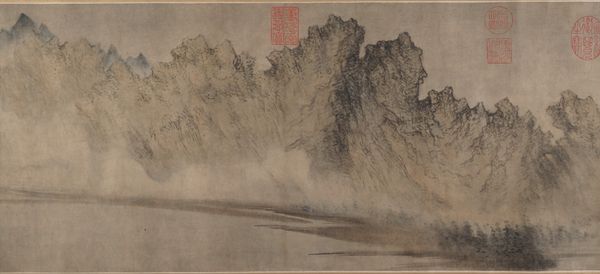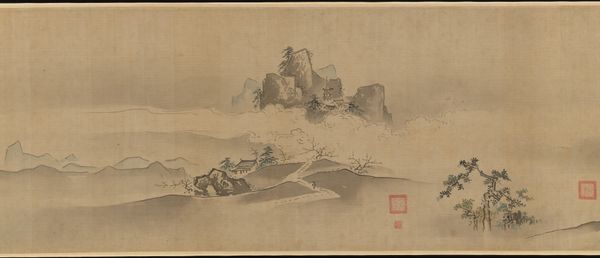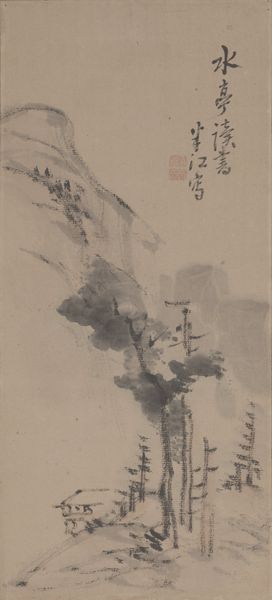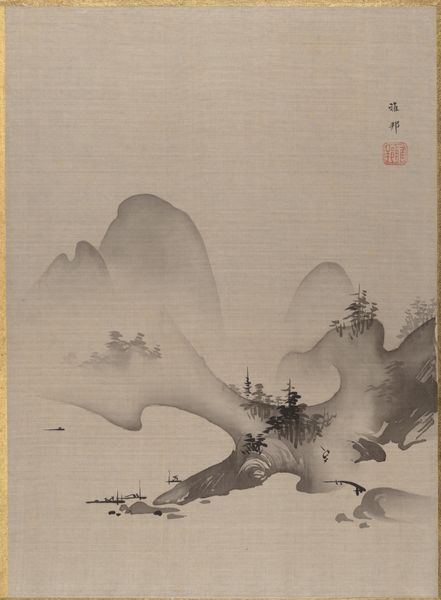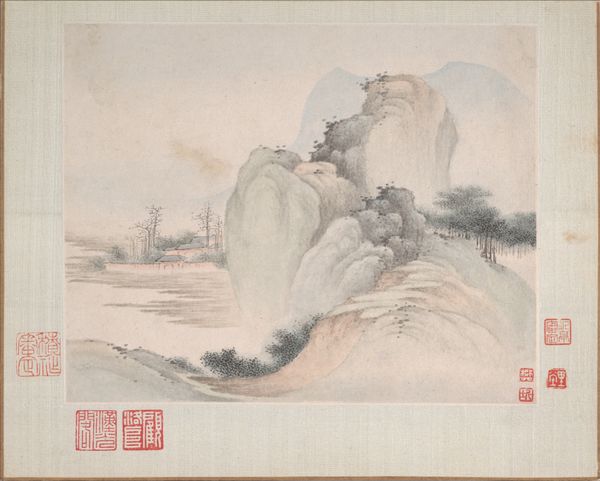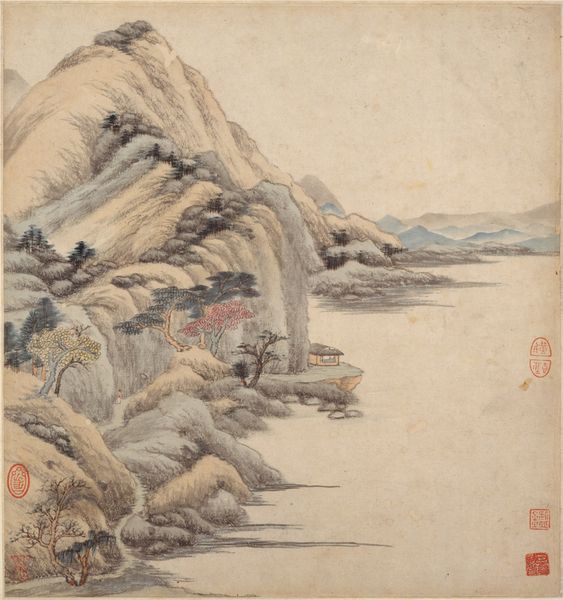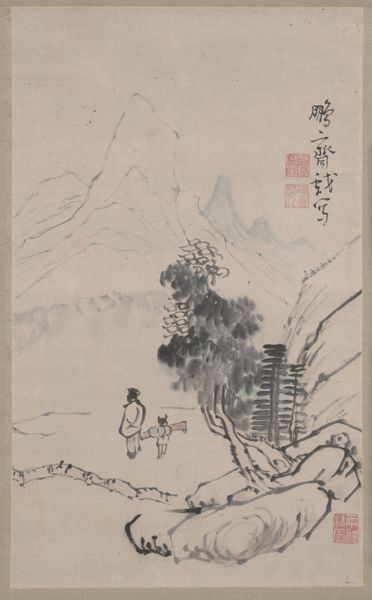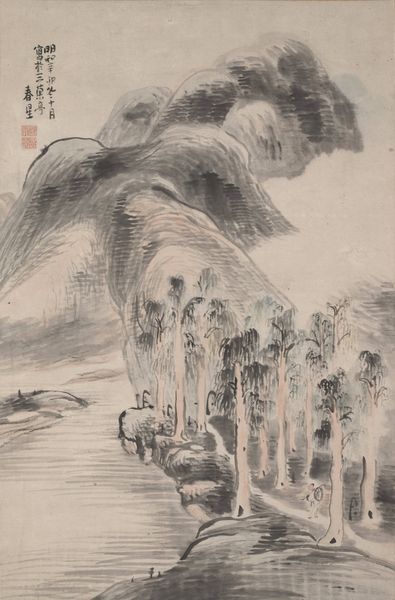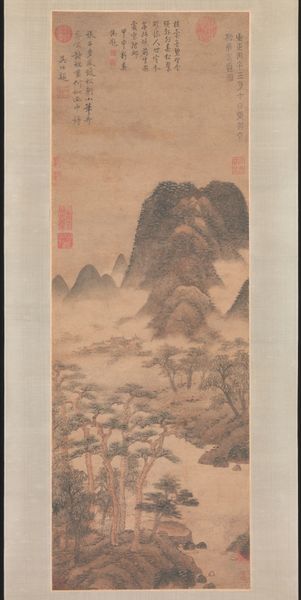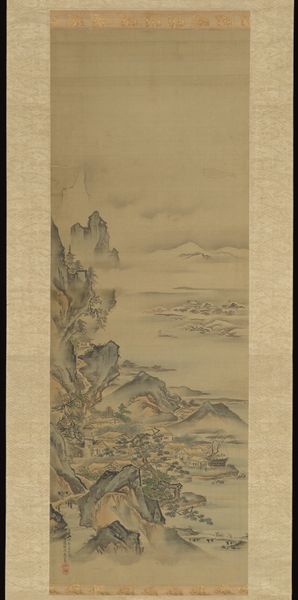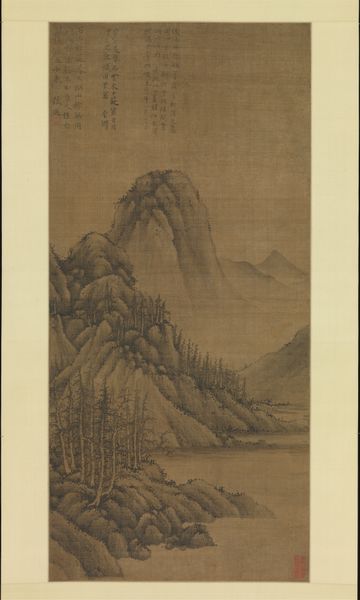
tempera, painting, watercolor, impasto
#
tempera
#
painting
#
asian-art
#
landscape
#
watercolor
#
impasto
#
orientalism
Dimensions: 14 1/8 x 10 3/8 in. (35.9 x 26.4 cm)
Copyright: Public Domain
Curator: Looking at "Rapids and Fall of a River," created by Hashimoto Gahō between 1868 and 1912, now held in the Metropolitan Museum of Art, the immediate sensation is one of calm melancholy. Editor: Yes, I agree. It has a hazy, almost dreamlike quality to it. The soft washes of ink create an ethereal effect, almost blurring the boundary between the representational and the abstract. Curator: The artist skillfully employs watercolor and tempera to render a classic scene from the Orientalist tradition—a landscape dominated by cascading water, imposing rocks, and the subtle suggestion of human habitation. What fascinates me is how these landscapes informed colonial ideas of the orient, romanticizing an ‘untouched’ space in relationship to the supposed ‘progress’ in the West. Editor: Absolutely. And Gahō's technique seems deeply rooted in classical East Asian traditions, like a studied meditation on form and negative space. Notice the strategic emptiness? That’s not just about aesthetic balance; it's culturally and spiritually loaded, inviting contemplation. How do you think that contributes to its appeal and its place within art history? Curator: That strategic emptiness also served an aesthetic agenda; it reaffirmed an essentialist reading of Asian cultures by contemporary Western viewers. It positions the East as meditative, spiritual and ancient, not necessarily considering its dynamic interplay of history and modernity. The emphasis becomes less about reflecting Japanese society's multifaceted development during this period and more about reinforcing a constructed, palatable Orientalism for consumption. Editor: Right, that act of 'consumption' is really the hinge on which we can discuss the power dynamics. What's compelling, and complex, about "Rapids and Fall of a River" is precisely this interplay: its rootedness in traditional techniques but, too, its capacity for representing the exoticism which was a dominant lens through which it was appreciated. It becomes not only a work of art but a case study for broader critical inquiry into identity and cultural politics. Curator: Precisely. It reminds us that engaging with art demands a continual process of interrogation, constantly challenging preconceived notions about value and representation. Editor: I completely agree. This piece provides rich ground for understanding not just aesthetic beauty, but also art's potent role in shaping and reflecting societal biases.
Comments
No comments
Be the first to comment and join the conversation on the ultimate creative platform.

